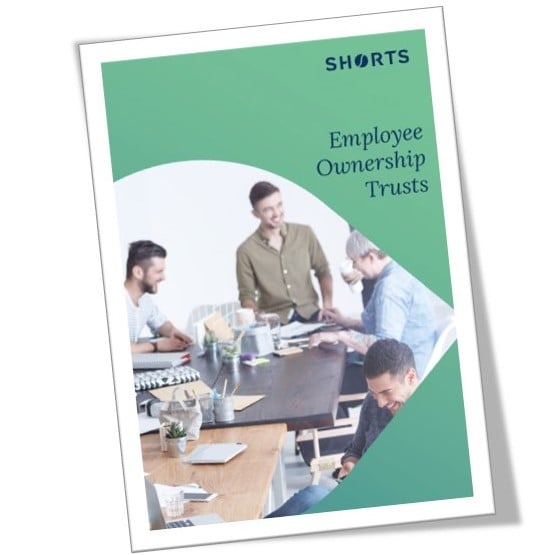
As an employee of a business, a significant ownership change can bring uncertainty and a lot of anxiety.
What does it mean for the future of the business? Is your job secure? Is your progression path still valid? These are the sort of questions you may be asking if your boss announces their plans to sell the business.
An increasingly popular method of selling a business is known as an Employee Ownership Trust (or EOT). So, if you are employed by a company that is being sold to an EOT, this article is here to tell you what to expect from the transition.
What actually is an EOT?
An EOT is a type of indirect employee ownership. It gives you, the employee, a stake in the business. However, it is not an employee share scheme. You are not being given shares directly.
The EOT is a trust, set up for the benefit of all employees. This means that, while you do not directly own part of the business (it is owned by the trust), you are a beneficiary of the EOT.
In short, when the EOT process completes, you will have a tangible stake in the business, just like company shareholders. When the business grows and thrives, so do your benefits.
What’s more, the specific rules of the EOT dictate that all employees, regardless of salary, position or role, benefit from the structure.
Is your job secure?
A scenario almost all employees fear is a change in company ownership resulting in restructuring and redundancies. This can be a particular worry when a competitor is acquiring the business. An EOT, however, is partly designed to remove this risk.
One of the principal benefits of an EOT for a departing owner is that they can safeguard your position and minimise disruptive change during and after their exit.
With regards to job security, nothing is certain; however, an EOT offers safeguards that no other method of selling a business currently does.
A real say in how the business is managed
The Employee Ownership Trust model means that employees can have a real say in the long-term direction of the business and more directly contribute to how it is run.
The EOT will have trustees, employees like you, who are selected to represent your interests. The employee trustees do not manage the company; the directors or senior managers will continue to do this. However, they will be able to oversee things and interject, if required, should the direction of the business not be in the best interests of the employees.
Employee bonuses
With talk of company ownership, even if only indirect, you might be wondering what financial benefits you gain from the EOT. One of the most significant benefits for employees is tax-free bonuses of up to £3,600.
There are some conditions that the company must meet for this benefit to apply, and decisions on employee bonuses will need to reflect that the previous owner will also need to be fully repaid for the business.
Once these conditions are met, you will receive the sort of economic benefits that would normally only be seen by shareholders.
So, is an EOT a good thing for employees?
Every business is different, and so are the priorities and preferences of each individual employee. By and large, however, we believe that the transition to an EOT is a positive development for the employees of a business. No other type of business sale is as employee-centric.
Employee owned businesses in the UK have demonstrated great resiliency and a happier, more engaged, and more committed team of employees. The EOT model was introduced in 2014 by the UK government in order to encourage businesses to adopt employee ownership models similar to John Lewis.
An Employee Ownership Trust is a model that puts the interests of employees at the top of the priority list. We at Shorts believe it is an excellent option for suitable companies, because it benefits not just the business and its bosses, but the employees too.

Adam Ames
During my career, I have gained an experience and an appreciation of the many issues and opportunities faced by businesses during all market conditions and economic cycles, which I use to provide invaluable advice to clients across all areas of corporate finance including EOTs, MBOs, acquisitions, disposals and finance raising assignments.
View my articlesTags: Corporate Finance, EOT
